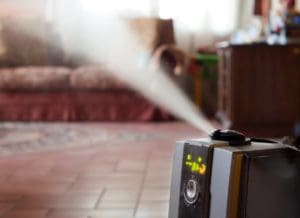
The air quality in our homes often has a greater impact on our comfort than we realize. Unfortunately, indoor air quality can be tricky because several different factors come into play. As with any complex topic, several misconceptions about indoor air quality have spread from time to time. Here, we will clear up a few of these common misconceptions so you can make informed decisions for improving the air quality in your own home.
Air Quality is Not Only a Problem in Older Homes
Most people naturally tend to associate things that are new with a sense of freshness — think of that new car smell. However, you may be surprised to learn that newly constructed homes often have poorer air quality than older homes. This is because many of the chemicals that are used in modern construction release harmful fumes into the air that become trapped inside the home.
Examples of contaminants that may be found in the air of a new construction home include formaldehyde and other volatile organic compounds, carbon monoxide, and even mold and mildew if the building wasn’t properly insulated during construction.
These contaminants can exacerbate asthma symptoms and cause a range of effects from throat and sinus irritation to nervous system damage and cancer if present in large quantities. Air quality testing is recommended for new construction homes.
Air Fresheners Don’t Help With Indoor Air Quality
Candles, incense, sprays, and all other incarnations of air fresheners are not a good solution for indoor air quality problems. Using air fresheners actually increases the concentration of volatile organic compounds in the air. This is true for every common type of air freshener, as these VOCs are components of fragrances used rather than the medium of delivery.
Many air fresheners advertise the capability to remove pollutants, allergens, and other sources of poor indoor air quality in the home. Unfortunately, the effectiveness of these products is difficult to verify. For a more effective and long-term solution, consider a whole-home air purifier. These devices use elements such as UV lights and electrostatic filters to remove particulate impurities from your home’s air.
Humidifiers May Not Improve Indoor Air Quality
It seems reasonable to think that a higher volume of moisture in the air will make it more difficult for airborne contaminants to travel, but this is not the case. In fact, bacteria and many types of particulate matter can cling to moisture in the air and travel more easily. For this reason, running your humidifier constantly is not the best choice for good indoor air quality.
If you use tap water in your humidifier, it can cause an even greater indoor air quality issue. Tap water contains impurities that are safe to drink, but not safe to inhale. Unless you use distilled water, your humidifier is likely dispersing particles of calcium, magnesium, chloride, and other minerals into your air.
Opening Windows Doesn’t Remove All Airborne Contaminants
If maintaining good indoor air quality was as simple as opening your windows from time to time, it wouldn’t be much of an issue. Because several porous materials are used in the construction of a modern home, particles in the air that would otherwise escape outside tend to linger.
Ventilating a home for 15 to 30 minutes doesn’t significantly impact the concentration of many types of particulate matter in the air. These substances create residues on surfaces in the home and continue to be released into the air gradually over time. Purifying your air and cleaning the surfaces in your home are both essential to maintain good air quality.
Understanding the facts about indoor air quality will help you keep the air in your home cleaner and healthier. For more useful tips and full service for all your HVAC needs, contact us at Steele Bros Heating, Inc.
